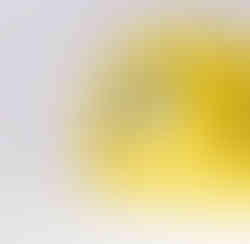Phlebodium aureum 'Blue Star' - Care, Tips and Info
Phlebodium aureum 'Blue Star', a stunning variety of the blue star fern, is beloved for its uniquely textured, wavy fronds and cool blue-green tones. Its foliage is soft to the touch, giving it an elegant yet approachable appeal that fits seamlessly into modern and minimalist interiors. This hardy houseplant, native to tropical and subtropical regions of the Americas, is an epiphytic fern, often found growing naturally on tree trunks. Its striking color and cascading growth habit make it an excellent choice for adding dimension and a pop of subdued color to your indoor space.
Highlights and Benefits
- Unique Foliage: Wavy, lance-shaped fronds in blue-green tones.
- Compact Growth: Typically grows to 50 cm in height with a similar spread, ideal for tabletops, shelves, or hanging displays.
- Hardy and Low Maintenance: Adapts well to varying light and humidity conditions.
- Pet-Friendly: Non-toxic to pets, ensuring safety for furry family members.
What You Need to Know About Phlebodium aureum 'Blue Star'
- Natural Habitat: Native to Central and South America, thriving in warm, humid, shaded environments like tropical rainforests. As an epiphyte, it grows on trees or rocks, absorbing nutrients from organic debris.
- Size and Growth Habit: Reaches a height and spread of approximately 50 cm indoors. Its cascading fronds create a lush, full appearance, making it a popular choice for hanging baskets or elevated planters.
- Toxicity: Non-toxic to pets and humans, making it a family-friendly addition to your home.
- Growth Rate: A moderate grower, developing lush fronds over time with proper care.
- Lifecycle: A perennial plant that will thrive for years with proper care.
Phlebodium aureum 'Blue Star' Care Instructions
→ Placement
- Best in a spot with bright, indirect light or partial shade.
- Tolerates lower light conditions but may grow more slowly.
→ Light
- Prefers medium to bright, indirect light.
- Avoid harsh, direct sunlight, which can scorch the delicate fronds.
→ Watering
- Keep the soil evenly moist but not soggy.
- Allow the top 1-2 cm of soil to dry slightly between waterings.
- Avoid overwatering, as it can lead to root rot.
→ Humidity
- Prefers high humidity levels (above 50%).
- Use a humidifier or place near other plants to create a humid microclimate.
→ Temperature
- Thrives in temperatures between 18-24°C.
- Avoid exposing it to cold drafts or sudden temperature changes.
→ Soil
- Use a loose, well-draining potting mix.
- A mix designed for ferns or epiphytic plants is ideal.
- Incorporate organic matter like sphagnum moss to help retain moisture.
→ Repotting and Pot Choice
- Repot every 1-2 years or when roots outgrow the pot.
- Choose a container with good drainage to prevent water accumulation.
→ Fertilizing
- Feed monthly with a diluted balanced liquid fertilizer during the growing season (spring and summer).
- Avoid over-fertilizing, as it can cause foliage burn.
→ Propagation
- Can be propagated by division.
- Separate healthy rhizomes and plant them in fresh potting mix.
- Ensure each section has a healthy root system and a few fronds.
→ Pruning
- Remove yellow or damaged fronds to encourage healthy new growth.
- Regular pruning ensures a lush, vibrant look.
→ Hydroponics
- Adapts well to semi-hydroponic setups.
- Use LECA or other inert substrates for nutrient absorption.
- Keep the base of the rhizome slightly elevated to prevent rot.
Common Problems with Phlebodium aureum 'Blue Star' and How to Solve Them
→ Pests
- Spider Mites: Increase humidity and treat with neem oil, or use beneficial insects or insecticidal soap.
- Mealybugs: Remove with a cotton swab dipped in alcohol and use neem oil as a preventative measure.
→ Leaf Issues
- Browning Tips: Caused by low humidity or underwatering. Increase humidity and ensure consistent moisture levels.
- Yellowing Fronds: Often due to overwatering or poor drainage. Allow the soil to dry slightly between waterings.
→ Root Rot
- Results from overwatering or compacted soil.
- Use a well-draining mix and ensure pots have drainage holes.
→ Fungal Problems
- Powdery Mildew: Improve air circulation and treat with a fungicide if necessary.
- Leaf Spot: Common in high-humidity environments. Remove affected fronds and treat with a fungicide.
→ Drooping Fronds
- Typically a sign of underwatering or environmental stress.
- Adjust watering habits and check placement conditions.
Interesting Facts About Phlebodium aureum 'Blue Star'
- This fern is an epiphyte, meaning it naturally grows attached to trees, absorbing moisture and nutrients from the air and organic debris.
- The unique blue-green hue of its fronds is due to a natural waxy coating, which also helps reduce water loss.
- It thrives in unconventional growing conditions, such as mounted displays or kokedama.
Etymology
- Genus: "Phlebodium" derives from the Greek words "phlebos" (vein) and "odus" (tooth), referencing the vein patterns on its fronds.
- Species: "Aureum" means golden, referring to the golden color of its spores.
- Reclassified and formally described by J. Smith in 1841.
Order Phlebodium aureum 'Blue Star' Now!
Bring the stunning Phlebodium aureum 'Blue Star' into your home today. Its striking blue-green fronds and easy-care nature make it a must-have for any indoor plant collection.
Phlebodium aureum 'Blue Star'
Phlebodium aureum 'Blue Star' comes in following sizes:
Baby Plant – is approximately 15 cm tall and comes in a ⌀ 6 cm pot
M – is approximately 30 cm tall and comes in a ⌀ 12 cm pot
L – is approximately 40 cm tall and comes in a ⌀ 17 cm pot
- Name:Phlebodium aureum 'Blue Star', a cultivar of Phlebodium aureum (L.) J.Sm
- Growth and Habit: Herbaceous, cascading fern
- Form: Epiphyte
- Family: Polypodiaceae
- Native Range: Central and South America (tropical rainforests)
- Hardiness Zone: Suitable for indoor growth
- Height: Up to 50 cm
- Spread: Up to 50 cm
- Humidity: 50-70%
- Light: Bright, indirect light; tolerates partial shade
- Temperature: 18-24°C
- Soil: Loose, well-draining mix with organic matter
- Watering: Keep soil consistently moist but not waterlogged
- Pruning and Maintenance: Remove yellow or damaged fronds to encourage growth
- Foliage: Wavy, lance-shaped, blue-green leaves
- Growth Rate: Moderate under ideal conditions
- Root Structure and Repotting: Shallow roots; repot every 1-2 years
- Fertilizing: Monthly during the growing season with a balanced liquid fertilizer
- Tolerance: Handles lower light and humidity, but thrives in optimal conditions
- Adaptability: Well-suited for indoor environments
- Propagation: Division of healthy rhizomes
- Common Pests: Spider mites, mealybugs; treat with neem oil
- Fungal Issues: Susceptible to powdery mildew and leaf spot; improve airflow
- Flowering: Does not produce flowers
- Longevity: Perennial with proper care
- Toxicity: Non-toxic to pets and humans
- Ideal Placement: Bright, draft-free spaces
- Special Care: Can adapt to semi-hydroponic setups
- Leaf Maintenance: Clean fronds with a damp cloth to remove dust
- Stress Signs: Drooping or yellowing leaves indicate water or light issues
- Pot Material: Containers with drainage holes; terracotta for better aeration

























































